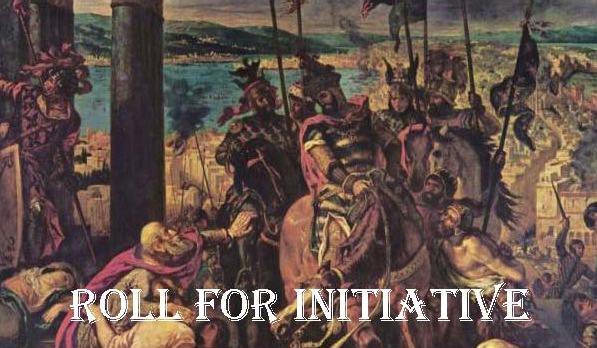As our group eagerly anticipates this weekend's finale to our long-running and highly-enjoyable Kingmaker campaign (thanks, Tayloritos!), I find my gaming style has changed dramatically from what it was perhaps 5 or 10 years ago. I don't know if it is late-onset ADD, but last week as we battled hordes of minions in our quest to lay a beatdown on the evil fey queen, I came to the conclusion that a part of me was subconsciously hoping my current character would bite it. "Why?", you may ask. "Do you not like your character?" On the contrary, Pesker, the Arcane Trickster, is actually quite awesome. Though not a heavy hitter in the party, our barbarian, our ranger and our summoner's eidolon are far more impressive at that. He is, however, supernaturally stealthy and often waltzes through combats without a scratch. He's also quite versatile, having potent spellcasting and skills to draw from.
So, what's the problem?
The new hotness has worn off....after four sessions! Yeah, this isn't even the guy I started with. My original character is Dakros the First, Priest-King of Drekmore. Once the kingdom was well-established, it became clear to me that King Dakros would not continue to wander about the hinterland, risking his neck. He needed to rule his kingdom and lead his armies. So, I retired him from adventuring and created Pesker to serve as the King's Man and deal with the dangers that threaten from beyond the temporal borders of the realm. I've learned a lot from the short time of playing Pesker. Having never played an arcane trickster (magic-user/thief in old-school parlance) in either D&D 3.5 or Pathfinder, I never had a good feeling for how to get the most synergy out of the combination. I see now that while rogues are pretty weak in Pathfinder, combining them with arcane spellcasting can make them pretty solid, especially using the Arcane Trickster PrC.
Anyway, getting back to the point of this post, it makes no sense that I should develop so little attachment to my character, that I am already looking at a replacement. I remember in my teenaged years playing the same character for years and being deeply invested emotionally in their survival. I even remember playing a dwarven fighter for months after he had hit his racial maximum and could not advance any further in levels. I can't even conceive of doing that now. Strangely, it seems my 15-year old self had a longer attention span than my 45-year old self. Or is it the nature of game today that encourages players to invest more in the "build" than the character itself? How do we get back to the "character-as-alter-ego" concept that tabletop rpgs are based on as opposed to playing a package of stats more akin to a boardgame or computer game? Would we even want to? Do any of you guys see this same trend or is it just me?
-Rognar-
New Blackmoor T shirt from WotC on Amazon
23 hours ago

